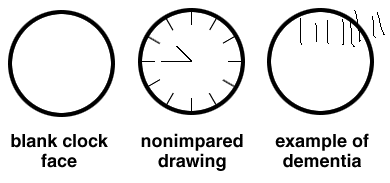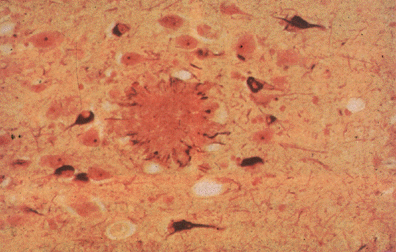Course Authors
John E. Morley, M.D.
During the last three years, Dr. Morley has received grant/research support from Vivus, Merck & Co., Upjohn, B.Braun McGaw, Bayer Corp and Nestec, Ltd. He has also served on the Speakers' Bureau for LXN, Organon, Ross, Pharmacia & Upjohn, Glaxo Wellcome, Hoechst Marion Roussel, Searle, Merck & Co., Roche, Bristol-Myers Squibb, Novartis, Pratt, B. Braun McGaw, Pfizer and Parke-Davis.
Estimated course time: 1 hour(s).

Albert Einstein College of Medicine – Montefiore Medical Center designates this enduring material activity for a maximum of 1.0 AMA PRA Category 1 Credit(s)™. Physicians should claim only the credit commensurate with the extent of their participation in the activity.
In support of improving patient care, this activity has been planned and implemented by Albert Einstein College of Medicine-Montefiore Medical Center and InterMDnet. Albert Einstein College of Medicine – Montefiore Medical Center is jointly accredited by the Accreditation Council for Continuing Medical Education (ACCME), the Accreditation Council for Pharmacy Education (ACPE), and the American Nurses Credentialing Center (ANCC), to provide continuing education for the healthcare team.
Upon completion of this Cyberounds®, you should be able to:
Identify the common treatable causes of dementia
Understand the diagnostic approach to dementia
Manage patients with dementia appropriately.
Dementia is defined as an impairment of cognitive function that results in functional deterioration. Dementia affects approximately 5% of the United States population over the age of 65 years.(1) By the age of 85 years, 20 to 40% of persons dementia and, among centenarians, 60% have been shown to have dementia.(2) Despite this high prevalence, physicians fail to diagnose dementia in up to half of persons with early dementia. Approximately 60% of persons with dementia have Alzheimer's disease, 20 to 30% have vascular (multi-infarct) dementia and 10 to 20% have a partially reversible cause of dementia.
Reverisible Causes of Dementia
The reversible causes of dementia are easily remembered by the mnemonic, DEMENTIA.
Drugs (digoxin, theophylline, cimetidine, anticholinergic)
Emotional (depression)
Metabolic (hypothyroidism)
Eyes and ears (sensory isolation)
Normal Pressure Hydrocephalus (ataxia, incontinence and dementia)
Tumor or other space-occupying lesion
Infection (syphilis, chronic infections)
Anemia (vitamin B12 deficiency)
Diagnosis of Dementia
The clinical diagnosis of dementia is made by utilizing the Folstein MiniMental State Examination.(4)
This test is educationally but not culturally specific. Thus, with appropriate adjustment for education, the test performs equally well for inner city African Americans, persons from France, Brazil, Hong Kong and affluent white Americans. For persons with a high school education or greater, the cutoff is 23 or less out of 30. With those who have an eighth grade education, the cutoff is 17 or less. Patients with higher scores may have dementia if they had an extremely high cognitive status when younger.
The MMSE fails to detect visuospatial cognitive dysfunction because only one point is allocated to this domain, i.e., the intersecting pentagons. For this reason, it is recommended that the patient is also asked to fill in the hour marks on a clock face and draw the hands indicating a time of 11:45. The un-numbered figures below offer cognitively impaired and unimpaired drawings as well as a sample you can download and print for your patients.
Figure 1. Figure 1. Clock Face Examples.

The St. Louis University Mental Status (Click to download this PDF document examination combines both these tests as well as tests of executive function. It can be used to detect mild cognitive impairment.
Laboratory Assessment of Dementia
To assess the metabolic factors which may be contributing to reversible dementia, the following lab tests should be performed:
CBC
- Chemistry panel
- Serum vitamin B12
- TSH
- Syphilis serology (fluorescent treponemal antibody test)
- Computed tomography without contrast (may miss normal pressure hydrocephalus and some vascular lesions)
OR
- Magnetic resonance imaging (more sensitive for vascular lesions)
Cerebrospinal fluid analysis should not be routinely performed in persons over 55 years of age and electroencephalography should be reserved for those with a high clinical suspicion of Creutzfeldt-Jakob disease and some persons with delirium, partial complex seizures or encephalitis.
The Major Noncurable Dementias
Prion (Slow Virus) Diseases:(5) Kuru was described in New Guinea tribes people who ate the brains of their departed relatives. This was demonstrated to be a transmissible disease and resulted in Gadjusek receiving the Nobel Prize.
Creutzfeld-Jakob Disease: Occurs in persons with corneal transplants and in older persons who received growth hormone extracted from pituitaries for short stature when they were young.
Mad Cow Disease:(7) This disease, otherwise known as bovine spongiform encephalopathy, was first described in 1986. The disease is similar to scrapie in sheep. It is related to a variant of Creutzfeldt-Jakob disease which appears to be caused by infections in humans from ingestion of cattle products.
Vascular Dementias: These are characterized by a step-wise progression with the person's cognitive function deteriorating each time they have a small stroke. These persons often have other signs of vascular disease, e.g., hypertension, myocardial infarction or previous major cerebrovascular disease. Pseudobulbar palsy with emotional lability is not a rare manifestation. Depression may coexist. Treatment consists of regulation of blood pressure, aspirin and/or vitamin E (N.B. aspirin and vitamin E interfere with each other and need to be given at different times of the day). Treatments to enhance blood flow, e.g., no otropics such as Hydergine; pentoxifylline or gingko biloba have not consistently been proven to be useful and may have strong placebo effects.
Alzheimer's Disease: This disease is characterized by the deposition of excessive amyloid plaques and neurofibrillary tangles. The amyloid plaques (Figure 1) are deposits of amyloid-beta protein. This protein is regulated by chromosome 21 and persons with Down's syndrome (triple chromosome 21) develop early Alzheimer's disease. Amyloid beta-protein is amnestic in mice and can produce tissue destruction.(8) Transgenic animals and SAM mice that overproduce amyloid precursor protein have premature cognitive failure.
Figure 1. Amyloid Plaques.

Presenilins, gene products on chromosomes 1 and 14 which increase the production of amyloid beta-protein, are also associated with early onset of Alzheimer's. In late onset Alzheimer's, the production of the apolipoprotein E4 allele from chromosome 19 has been associated with an increased propensity to develop the disease in older persons and the development of neurofibrillary tangles.
Alzheimer's disease is also associated with a number of neurotransmitter changes. Of these, an acetylcholine deficiency has been best studied. This has led to the development of drugs that enhance cholinergic function by blocking its breakdown, e.g., tacrine (Cognex) and donapezil (Aricept). Tacrine is associated with liver dysfunction, which is not a problem with donapezil. These drugs are expensive and have questionable efficacy.
Estrogen replacement therapy appears to delay the appearance of Alzheimer's and perhaps decrease functional decline.(9) Nonsteroidal anti-inflammatory agents appear to have similar effects.
Nonpharmacological Management of Patients with Dementia
Even those patients with non-reversible dementia can be helped. Here are some steps caregivers can take to help patients with dementia function at as high a level as possible.
- Refer to the local Alzheimer's and Related Diseases Association for support.
- Provide a Medic Alert, or Safe Return, bracelet in case the patient wanders off and gets lost.
- Make sure the patient stops driving and refer him to the DMV if he doesn't.
- Teach the patient and caregiver to use reminders to alleviate memory problems, e.g., write things down, place reminder signs around the home.
- Watch for the development of caregiver burnout and depression.
- Make the caregiver aware of respite opportunities such as the 48-hour respite given to nursing home staff.
- Teach the utility of frequent toileting in the management of incontinence. Incontinence is the major reason for institutionalization in demented persons.
- Provide names of useful resource texts to the caregiver.
Summary
The prevalence of dementia increases with aging. It is important that the physician excludes potentially treatable causes. Drugs presently available for the treatment of dementia of the Alzheimer's type have miniscule beneficial effects. Physicians need to be aware of the nonpharmacologic management strategies which benefit the patient with dementia and their caregivers.(12)
Dementia Resources for Caregivers
- Gruetzner H. Alzheimer's: A Caregiver's Guide and Sourcebook. New York: John Wiley, 1988.
- Mace NL, Rabins PV. The 36-Hour Day. Revised Edition. Baltimore: Johns Hopkins University Press, 1991.
- Robinson A, Spencer B, White L. Understanding Difficult Behaviors: Some Practical Suggestions for Coping with Alzheimer's Disease and Related Illnesses. Ypsilanti (MI): Geriatric Education Center of Michigan, Michigan State University, 1988.